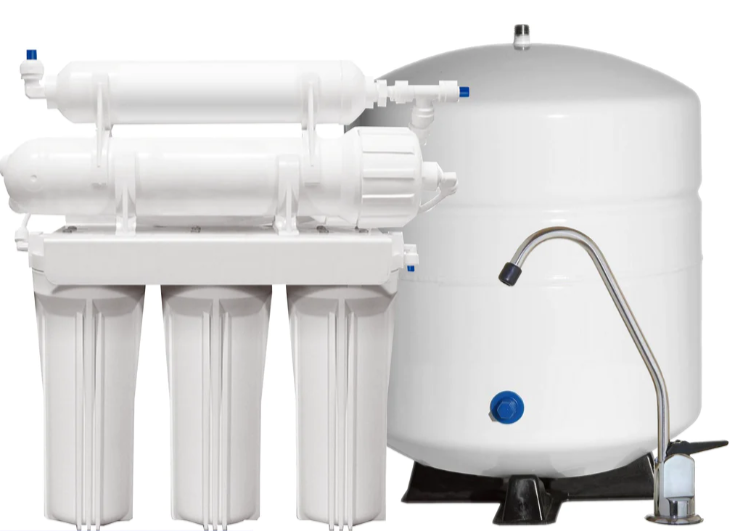Contents
Reverse Osmosis vs. Other Water Filtration Methods – Pros and Cons
In today’s world, ensuring access to clean and safe drinking water is of utmost importance. With several water filtration methods available, it can be challenging to determine the most suitable option for your needs. This article aims to compare reverse osmosis with other popular water filtration methods, highlighting their respective pros and cons.
Reverse Osmosis
Reverse osmosis (RO) is a highly effective water filtration method that uses a semi-permeable membrane to remove contaminants from water. It works by applying pressure to the source water, forcing it through the membrane, leaving behind unwanted substances.
Pros:
- Removes a wide range of contaminants, including bacteria, viruses, heavy metals, and pesticides.
- Improves the taste and odor of water.
- Requires minimal maintenance.
- Provides clean and purified water suitable for drinking and cooking.
Cons:
- Can be relatively expensive to install and maintain.
- Wastes a significant amount of water during the filtration process.
- May remove beneficial minerals along with the contaminants.
Other Water Filtration Methods
There are several alternative water filtration methods available in the market. Some common ones include activated carbon filters, UV purification, and distillation.
Activated Carbon Filters:
- Pros:
- Effective in removing chlorine, volatile organic compounds (VOCs), and bad taste/odor.
- Relatively inexpensive compared to RO systems.
- Cons:
- Not as effective in removing certain contaminants like heavy metals and bacteria.
- Requires frequent filter replacements to maintain efficiency.
UV Purification:
- Pros:
- Destroys bacteria and viruses without using chemicals.
- Requires minimal maintenance.
- Cons:
- Does not remove other types of contaminants like dissolved solids or heavy metals.
- Needs a power source to operate.
Distillation:
- Pros:
- Removes many contaminants, including heavy metals and toxins.
- Produces pure water suitable for various applications.
- Cons:
- Requires significant energy consumption.
- Removes beneficial minerals present in water.
Ultimately, the choice of water filtration method depends on individual requirements, budget, and the specific contaminants present in the water source. It is advisable to consult a water treatment professional for personalized advice.
💧 = Use the coupon code SALEG3P800 to save $150 OFF on the 800GPD Tankless RO System with UV Sterilizing Light – Waterdrop G3P800 = 💧
Reverse Osmosis vs. Other Water Filtration Methods – Pros and Cons
Introduction
[Write a brief introduction paragraph about the importance of water filtration and the need to compare different methods for clarity and purity.]
Reverse Osmosis
[Provide a description of reverse osmosis and how it works. Discuss its pros and cons in comparison to other filtration methods.]
Pros of Reverse Osmosis
- [Highlight a key advantage of reverse osmosis.]
- [Highlight another advantage of reverse osmosis.]
- [Discuss any other positive aspects of reverse osmosis.]
Cons of Reverse Osmosis
- [Mention a drawback or limitation of reverse osmosis.]
- [Highlight another disadvantage of reverse osmosis.]
- [Discuss any other negative aspects of reverse osmosis.]
Other Water Filtration Methods
[Briefly introduce and describe other common water filtration methods, such as activated carbon filtration, distillation, UV purification, etc.]
Pros of Other Water Filtration Methods
- [Highlight a key advantage of each mentioned water filtration method.]
- [Highlight another advantage of each mentioned water filtration method.]
- [Discuss any other positive aspects of each mentioned water filtration method.]
Cons of Other Water Filtration Methods
- [Mention a drawback or limitation of each mentioned water filtration method.]
- [Highlight another disadvantage of each mentioned water filtration method.]
- [Discuss any other negative aspects of each mentioned water filtration method.]
Conclusion
[Summarize the key points discussed above and provide a conclusion on which water filtration method may be the best fit for different needs and circumstances. Mention the importance of considering factors such as cost, effectiveness, maintenance, and personal preferences when choosing a water filtration system.]
For more detailed information, you can read our detailed comparison of water filtration methods.
💧 = Use the coupon code SALEG3P800 to save $150 OFF on the 800GPD Tankless RO System with UV Sterilizing Light – Waterdrop G3P800 = 💧
Shop now for Waterdrop N1
Frequently Asked Questions: Reverse Osmosis vs. Other Water Filtration Methods
1. What is Reverse Osmosis?
Reverse osmosis (RO) is a water purification process that uses a semipermeable membrane to remove contaminants, particles, and impurities from water. It is known for its effectiveness in producing clean and safe drinking water.
2. How does Reverse Osmosis compare to other water filtration methods?
While there are various water filtration methods available, reverse osmosis has its own set of pros and cons:
Advantages of Reverse Osmosis:
- Highly efficient in removing a wide range of contaminants
- Provides purified water that is free from most bacteria, viruses, chemicals, and heavy metals
- Improves the taste, odor, and appearance of water
- Can be installed at point-of-use, ensuring clean water directly from the tap
Disadvantages of Reverse Osmosis:
- It produces wastewater during the filtration process
- Requires regular maintenance, such as replacing filters and sanitizing the system
- Removes minerals from water that may be beneficial for health
- Typically requires more energy compared to other filtration methods
3. What are some other water filtration methods?
Activated Carbon Filtration:
This method uses activated carbon to absorb impurities and contaminants. It is effective in reducing chlorine, chemicals, and some heavy metals. However, it may not be as efficient in removing certain bacteria, viruses, or dissolved solids.
Ultraviolet (UV) Purification:
UV purification utilizes UV light to destroy bacteria, viruses, and other microorganisms. It is a chemical-free method and does not affect water taste or mineral content. However, it does not remove impurities like chemicals, heavy metals, or sediment.
Ion Exchange:
In ion exchange, ions from unwanted substances are replaced with ions of desired substances. It can be used to reduce water hardness by exchanging calcium and magnesium ions with sodium ions. Nevertheless, it may not be effective in removing all contaminants.
Distillation:
Distillation involves boiling water, collecting the steam, and condensing it back into liquid form. It effectively removes impurities and most contaminants. However, the process is energy-intensive and removes beneficial minerals from water.
4. Which water filtration method is best for me?
Choosing the right water filtration method depends on various factors such as the quality of your water source, the specific contaminants you want to remove, budget considerations, and personal preferences. It is recommended to get your water tested and consult with a water treatment professional to determine the most suitable filtration system for your needs.
What is Reverse Osmosis System?
A reverse osmosis system is a water purification technology that uses a semi-permeable membrane to remove impurities and contaminants from water. It is an effective method to obtain clean, purified water for various applications.
How does Reverse Osmosis work?
The reverse osmosis process uses pressure to force the water through the semi-permeable membrane, which has tiny pores that allow only water molecules to pass through. This membrane effectively filters out impurities such as dissolved salts, minerals, bacteria, and other harmful substances present in the water, leaving behind clean and purified water.
Benefits of Reverse Osmosis System
1. Improved Water Taste and Odor: By removing various contaminants, reverse osmosis systems enhance the taste and odor of water, making it more pleasant to drink and use in cooking.
2. Reduced Impurities: Reverse osmosis effectively eliminates impurities like lead, chlorine, arsenic, nitrates, and many others, ensuring the water is safe and healthy for consumption.
3. Cost-effective: Having a reverse osmosis system can save money in the long run as it eliminates the need for buying bottled water, which can be expensive.
Outbound Link
For more detailed information, you can visit the Wikipedia page on Reverse Osmosis.
Reverse Osmosis vs. Other Water Filtration Methods
Pros and Cons
-
Reverse Osmosis
- Pros:
- Highly effective in removing various contaminants
- Can remove dissolved salts and minerals
- Can improve the taste and odor of water
- Cons:
- Requires electricity to operate
- Wastes a significant amount of water during the filtration process
- May remove beneficial minerals from water as well
- Pros:
-
Other Water Filtration Methods
- Pros:
- Can be more cost-effective compared to reverse osmosis
- Do not waste as much water during filtration
- Can retain beneficial minerals in water
- Cons:
- Might not be as effective in removing certain contaminants
- May require frequent filter replacement or maintenance
- The taste and odor of water might not be significantly improved
- Pros:
💧 = Use the coupon code SALEG3P800 to save $150 OFF on the 800GPD Tankless RO System with UV Sterilizing Light – Waterdrop G3P800 = 💧
Category – Reverse osmosis and filters
































